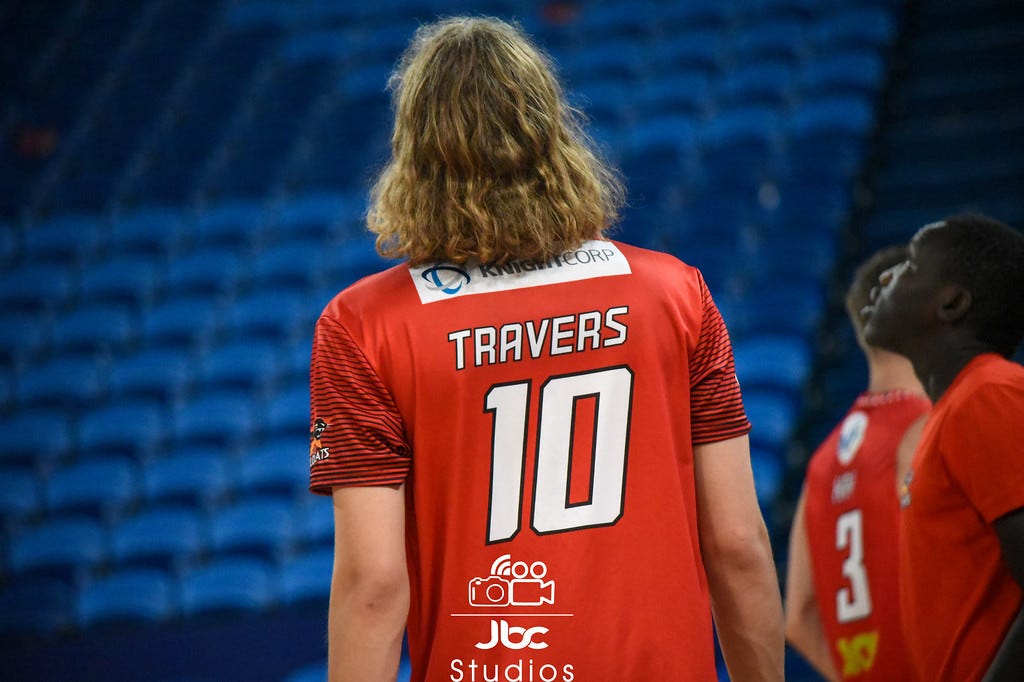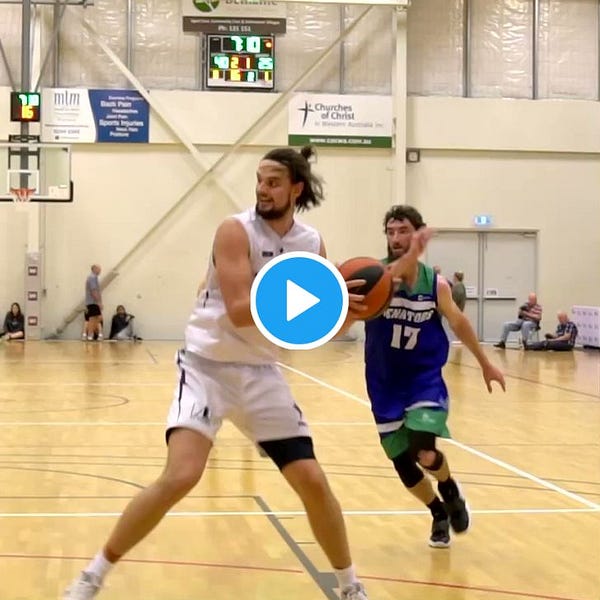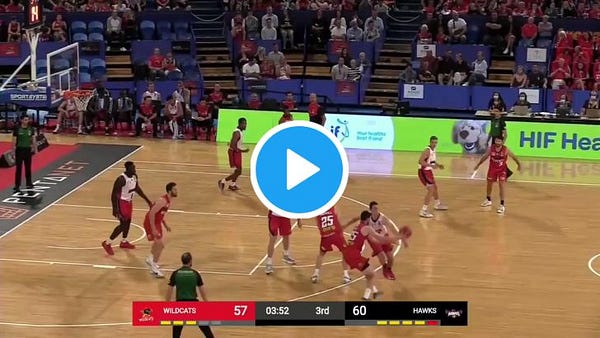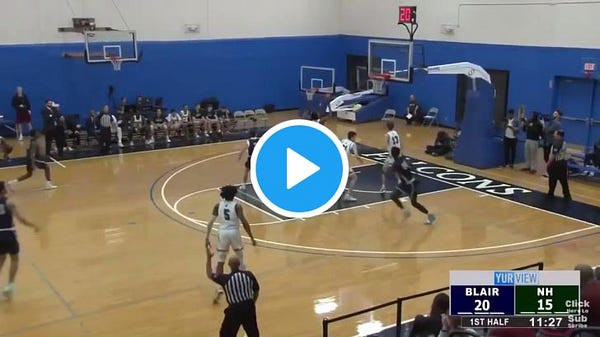NBL21 Prospect Watch: 17 names you should know this season
Keep an eye on these talented prospects, as we head into the NBL 2021 season.
Credit: JBC Studios / Jacob Crook
NBL basketball is right around the corner, and this season has a number of young talent ready to prove themselves on the professional level. From Next Stars to Development Players, here are some names to keep an eye on this NBL 2021 season.
Note: It was tough to define boundaries on what constitutes a ‘prospect’, and this list focuses on players 21 years and under, or in their first year. For clear studs returning from college such as Dejan Vasiljevic (covered in Jacob Doole’s list of college returnees), or established yet still upcoming younger players like Angus Glover (who was discussed by Jordan McCallum), rest assured they have not been forgotten.
Do support our work around Australian basketball, and become a subscriber today!
Perth Wildcats
1. Luke Travers
For a number of years now, Luke Travers has been identified as one of Australia’s best local up and comers. It appears we’re about to see that potential in action.
After logging only 28 minutes of largely garbage time across four appearances in 2019-20, Travers was thrust into a much larger role this preseason, starting in both Perth’s games against The Hawks. Scoring eight points in 22 minutes in his first outing, followed by nine points, seven rebounds, three assists and a block across 29 minutes in his second, Travers looked set to meet the high expectations of Perth’s coaching staff to step up this upcoming season.
While Travers won’t light up box scores with his scoring, he’s a poised contributor who can influence the game in many ways. A smart passer, opportunistic cutter, talented defender and active rebounder, Travers will be able to play off of Perth’s star pieces in a variety of lineups.
“For our team, he needs to do those little things all the time to get on the floor: run the floor, use his athleticism, make some plays with his ball-handling, rebound,” former Perth assistant coach —now Tasmania JackJumpers head coach— Scott Roth shared.
“We don't need him to score, we have Blanchfield and Cotton and those guys that can put the ball in the basket.
“To me, he's going to get those minutes by defending guys, making plays in the open floor, using his size and athletic ability, and those things that are not so much about talent but work ethic that needs to be developed and to have that nightly, especially in Perth. It's not going to be easy in Perth because no one's giving anything there. It might be easier in some other places where he just gets the minutes because he's basically a Next Star player, and they've given him minutes because they want him on the roster and it's good PR, but it's not happening in Perth, it's a different deal there.”
While most traditionally a wing, Travers also has the size at 6’8 to slide up to minutes at the 4 spot, particularly having added strength to his frame over the off-season.
Given Todd Blanchfield and Clint Steindl will rejoin the lineup for regular season play, minutes at the 2 and 3 will be slim. Minutes in the front court may be another avenue for the 19 year old to earn some time. While the team’s last big man is yet to be signed, signs point to a centre being the final pickup, with Tom Jervis headlining the rumour mill to replace the injured Majok Majok. If so, Travers may appear to be a superior option to 34 year old Jesse Wagstaff, when it comes to backing up import John Mooney (who appears set to slide over for minutes at the 5). It’s in this role that Liam Santamaria has speculated that Travers could begin the season in the Wildcat’s starting lineup.
2. Wani Swaka Lo Buluk
Perhaps the less highly touted of Perth’s youthful duo, Wani Swaka Lo Buluk actually played a larger role for the Wildcats last season, appearing in 86 minutes last season across 11 games.
“By the end of the season, he was getting a few minutes here and there and we were excited that we could put him in games - big games - and those minutes are invaluable for his confidence,” Roth said to The Pick and Roll late last year.
At a long 6’6 with above the rim athleticism, Lo Buluk is clearly an NBL level athlete, and with experience playing at point guard at the junior and SBL level, has a varied skill-set to hone over the coming years. “I’m a big Wani fan,” Roth said. “He’s got really good size and he’s a combination guard. I think he has a lot of upside and is flying a little bit under the radar.”
Unfortunately, the young wing's momentum has been slowed down by injury. In September 2019, Lo Buluk missed substantial time after ankle surgery, after an injury sustained at practice, and so far this season has been missing from preseason action due to a groin aggravation. Between these setbacks, Lo Buluk suited up for the Warwick Senators for the 2020 SBL season, averaging a modest 10 points, 4.3 rebounds and 3.4 assists in 13 games - slightly inferior numbers in comparison to his 2019 campaign.
It’s unclear just what form Lo Buluk will be in to enter the season, but on paper, a role may be there for the taking. With a relatively thin backcourt outside of Bryce Cotton, the rotation will be filled out by Mitch Norton and Kevin White, as well as Clint Steindl, who may likely share his time amongst both wing spots. Beyond that, there is room for Lo Buluk to carve out minutes at either guard spot.
In theory, Lo Buluk could function as a bigger, two-way initiator of the offence. This allows Cotton to play his usual role as an undersized off-guard offensively, whilst Lo Buluk could handle the more imposing opposition back court threat, regardless of size or position. Whether Lo Buluk is ready to fulfill such a role at the NBL level is yet to be determined.
3. Corey Shervill
A special shout out needs to go the Wildcats’ most recent development player, Corey Shervill. Never seen before at the NBL level, Shervill came out of the gates firing this preseason. Though certainly not bashful, his offensive aggression led to 16 points across his two preseason hit outs, even earning the start in the latter Wildcats/Hawks matchup.
While his performances across the preseason may have come as a surprise to most, Shervill’s opportunity with Perth came by the way of standout play in both college and the WA SBL. The 22 year old spent the last 3 seasons playing for Division 2 program St Edwards, putting up 11.6 points per game last year, and more recently appeared in 3 games for the Lakeside Lightning in the West Coast Classic, leading the league at 22.3 points per game.

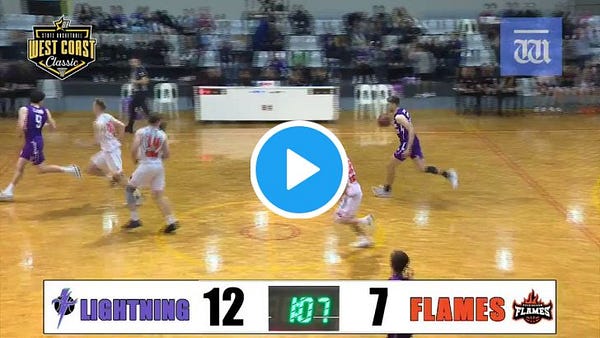
At 6’8 with a quick release jumper and scoring instincts, Shervill has the chance to develop into a legitimate NBL player over the next few years.
The Hawks
4. Max Darling
After two seasons playing abroad in Croatia, Max Darling has come home to take the next step in his career, under Brian Goorjian with The Hawks.
While professionally experienced, Darling is still only 20 years of age. He will no doubt benefit greatly under the tutelage of one of the NBL’s best ever coaches. The NBL will be a step up in competition from his experience in Europe, and to really make his mark will require improving his conditioning and physicality to maximise his physical tools, whilst continuing to develop his offensive game.
The Hawks have played three preseason games up to this point, with Darling scoring only six points and four rebounds in 33 minutes of game time.
While Darling’s scoring skillset is undoubtedly undercooked, his currently suboptimal role is exacerbating said flaws. Despite his size at 6’6, Darling found success overseas playing the centre position, using his size, athleticism and length to play the finishing role either as the roll man in pick and roll actions, or sitting in the dunker’s spot.
In stark contrast, Darling has played most of his minutes thus far at the 4, largely sitting out on the three-point line. Of his 12 field goal attempts, ten have been three-point attempts, and only one has converted. Over his 2019-20 season playing for KK Vrijednosnice Osijek, three-pointers constituted only 21% of the big man’s field goal attempts, where he connected on 13/46 (28.3%) across 22 games.

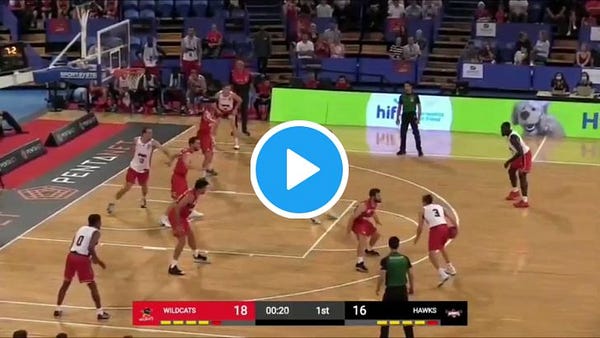
While it is encouraging to see Darling continue to take threes for development’s sake, his shooting does not appear to currently be at a level that will pay dividends for The Hawks, with teams completely sagging off his three-point attempts.
With Darling seemingly penciled in at backup power forward for the time being, he will need to make rapid shooting progress —as well as significantly slim down— to make an impact at the position this season. However, with Cam Bairstow set to return to the lineup, we may see Darling out of the front court rotation completely. If he does gain minutes during the regular season, I hope it’s competing with Ogilvy and Gak for backup centre minutes. As unconventional as it may seem for a player of his size, the position plays to his current strengths and utilize his bulk and athleticism.
I might be painting a bleak outlook for Darling’s first NBL season, but long term it’s obvious he has serious potential, and once he finds his niche in the league the sky is the limit. Whether we see glimpses of that potential this season may likely depend on how much, and more importantly how, he gets used.

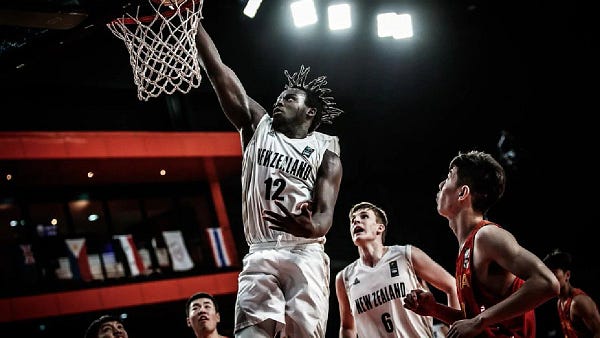
5. Akoldah Gak
Someone who may potentially get in the way of Darling logging centre minutes, is 18 year old Akoldah Gak. It would largely be expected that Gak won’t hit the floor for The Hawks in NBL21, but the big appeared to hold his own in limited preseason minutes and has a massive ceiling as a prospect.
A big time athlete with above the rim athleticism, great mobility and coordination, and flashes of outside shooting has resulted in the big man appearing at #96 on ESPN’s Top 100.
While unlikely to appear much this season, The Hawks clearly see the long-term potential. They signed him on a maximum length three-year contract, which elevates him to a full roster spot after this season. He’s one to watch for the future and may only be an injury or two away from regular season minutes this season.
6. Sam Froling
Back in March, I argued to mixed response that Sam Froling might have a glimmer of a chance to sneak into the late second round of the 2020 draft, given his stash situation and unique skill level for a big. While it (probably unsurprisingly) didn’t eventuate, Froling remains one of the most intriguing young players in the league, and on The Hawks’ young roster, the door is open for him to have an NBL breakout year.
Logging 13.2 minutes per game across 16 appearances last season, Froling looked promising in limited minutes. On a per 36 minute basis, Froling would average 17.4 points and nine rebounds, all whilst battling injury niggles that would keep him in and out of the lineup.
Now, outside of veteran Cam Bairstow, Froling is likely The Hawks’ best big man this coming season, and should presumably start alongside the former Chicago Bull in the front court. Froling started all three games for The Hawks this preseason, though he would play an average of just over 18 minutes in each. Whilst his scoring production was modest, (seven points, four points and four points across three games), here’s hoping come regular season, we see the second year jump many are presuming he makes.
7. Isaac White
When I spoke to Isaac White in May 2020, he had just transferred to Cal Baptist in hopes for a massive, showcasing senior college year.
How quickly things change.
In July, he would announce his decision to turn pro in the midst of COVID-19 and its associated uncertainty, joining the Hawks on a two-year deal.
With his initial decision to transfer, White had intended to show that he was more than just a shooter, after three seasons functioning as an undersized spot up shooter for Pac-12 program Stanford. Now in the NBL, proving he’s more than just a shooter will be even more pivotal.
Having shot 37.2% across three college seasons, it’s clear that White can shoot the ball. However, across three preseason games, White managed only five points in over 33 minutes of play, shooting 2/10 from the field and 1/5 from three. For someone whose value will primarily derive from his shooting prowess, it appeared White would struggle to find good looks from beyond the arc, as his 6’2 frame would be challenged with even bigger, more stifling defences.
Size limitations aside, there is a path to success for White, but it’s one that will require developments as a ball-handler and a greater versatility shooting the ball. Promisingly, White did show examples of good passing in pick and roll situations, but more scoring gravity off the dribble will open up more passing opportunities for White in on-ball situations. Off the ball, White will hopefully be able to leverage The Hawks’ numerous ball-handlers such as Tyler Harvey, Deng Adel, as well as the high post facilitating of guys like Sam Froling to garner spot up looks. But for White to expand his role as a dynamic scorer, the ability to get looks from off-ball screens ala a Clint Steindl could expand his utility as a shooter, and justify his role out on the floor to a greater extent.
Contracted to a full roster spot, you’d have to imagine White is part of the regular rotation to some extent come the regular season. Though with Tyler Harvey and Emmett Naar sharing the bulk of the point guard minutes, White will likely be plugged in sparingly to provide some extra spacing from time to time.
Cairns Taipans
8. Mojave King
If anyone was sleeping on the Mojave King hype train during the offseason, it didn’t take long for him to introduce himself and get them on board. Playing in his first preseason game on New Years Eve, King lit Melbourne United up for 21 points in 21 minutes, displaying many of the skills that have made him a potential NBA first round pick in 2021.
King is an NBA-level shooter and athlete, and playing in the Taipans’ pace and space system is a perfect fit for the young wing. With Machado running the ship, King should find himself getting plenty of open looks either running the floor or outside the arc. Any semblance of off the dribble shot creation or point guard play will be icing on the cake that could boost King’s draft stock well into the middle of the first round.
His defence was also encouraging, showing an engagement off the ball that has been a question up to this point.
Be it starting or coming off the bench, King will never be short on minutes with Cairns this season. Though primarily covering the shooting guard spot along with Mirko Djeric, head coach Mike Kelly has shared a willingness to play him anywhere from point guard to the 3 spot. While Jarrod Kenny and Jordan Ngatai are dependable depth options, they are far from irreplaceable rotation pieces. Should King prove worthy of more time through his play, we could see him covering time all over the Taipans’ perimeter spots.
For a deeper look into Mojave King as a prospect, don’t forget to check out Ayush’s video breakdown below.
Adelaide 36ers
9. Josh Giddey
The other half of the NBL’s prized local Next Star contingent, Josh Giddey is a young gun whose name is likely on everyone’s lips going into the 2020-21 season. Generally projected around the 20-40 range amongst various mock drafts going into the season, Giddey has a lot of hype to live up to.
As a 6’8 point guard, Giddey is a rare player teams will covet, purely from his rare combination of size, ball handling and passing acumen. While comparisons to LaMelo Ball are inevitable due to his presence in the league the season prior, such hyperbolic expectations will only set Giddey up to fail. However, Giddey is indeed a legitimate NBA prospect, and has a chance to cement that kind of reputation with a strong season this year.
Since his signing with Adelaide back in March, I’ve been watching with increasing skepticism as the 36ers constructed their team around him, and legitimate question marks surround his fit with the completed roster.
The back court is in a word, stacked. You have combo guards Donald Sloane and Sunday Dech, fully contracted point guards Daniel Dillon and Alex Mudronja, as well as shooting guard Brendan Teys. Giddey is likely set to jump the latter few in the depth chart, but with only ten fully contracted players allowed on the roster, it signals that various holes in other areas of the rotation which could be plugged by playing Giddey on the wing.
There’s no doubt Giddey will get the ball, but he’ll also be sharing it with others, most notably Sloane, who works best with the ball in his hands. It will require Giddey to demonstrate an off-ball skillset, particularly shooting the ball, which up to this point has been a point of weakness for the 18 year old.
The team also possesses dual seven-footers in the starting lineup, and lacklustre spacing outside of shooters Jack McVeigh and Daniel Johnson. It’s definitely a far cry from the modern pace and space lineups that will benefit Mojave King over in Cairns.
Giddey dazzled against Brisbane in his opening preseason game to the tune of 13 points, eight rebounds and six assists in 24 minutes, albeit against a very incomplete Brisbane roster, and also without having to coexist with high usage back court partners such as Sloane. In his second performance against Brisbane he would put up nine points (2-7 FG), six rebounds, seven assists and two steals in 26 minutes. Expect the tale of these two games to be a trend for Giddey going into the season. His rebounding and facilitating being steadfast qualities that will provide consistent value, while his scoring may prove to be more hit and miss.
That scoring ability, along with his defence, will be two areas of improvement scouts should keep their eyes on all season. You can view my comprehensive breakdown of Giddey’s game in the video below.
10. Owen Hulland
Owen Hulland returns from two modest seasons at D1 program Hawaii, playing only 125 minutes over his two seasons with the Rainbow Warriors, but it took only one preseason game for Hulland to make an impression on NBL fans.
In 20 minutes, Hulland dropped 15 points for the 36er’s, going 4/4 from the three point line.
It remains to be seen what else Hulland can contribute out on the floor, but having that sweet a stroke at 7 foot is enough of a premium skill to provide him with an NBL future.
While Adelaide are loaded with size in their starting 5, their only backup big appears to be Keanu Pinder. While they will likely play some smaller lineups with McVeigh or Crocker at the 4, there’s a possibility that Hulland could log some minutes this season to fill out the rotation.
11. Alex Mudronja
Alex Mudronja was likely eyeing 2021 as the year to really make an imprint at the national level. The 21 year old has been with Adelaide over the past few years as a development player, and has finally been elevated to a full roster spot.
Mudronja will likely see the floor on some capacity, but the signing of Josh Giddey, alongside import Donald Sloan will likely limit any aspirations for a breakout. With guards Daniel Dillon, Sunday Dech and Brendan Teys also on the roster, he will have to compete for every minute he gets this season.
Mudronja possesses plenty of talent, having displayed dominant flashes at the then-SEABL level as well as at international events like Adidas Nations as a junior, but this may prove to be a challenging year to show people just how good he is.
Brisbane Bullets
12. Tamuri Wigness
Tamuri Wigness’ electric game has been turning heads from a very young age. A perfect example of his promise was when he suited up for the Cairns Taipans at 15. By putting up 10 points, two rebounds and two assists against Trae Young and Oklahoma State back in a 2017 preseason matchup, the dynamic guard seemed destined for greatness.
Since then, Wigness has appeared to plateau.
Now 18 and standing at 5’11, talks of an NBA future may have quietened, but he still possesses a bright future the Brisbane Bullets have put stock in, via the form of a fully contracted roster spot.
The extent of Wigness’ court time may largely boil down to Andrej Lemanis’ pivotal decision to either play Nathan Sobey primarily at the point guard, or shooting guard. Should it be the former, Sobey and Cadee will likely eat up the majority of point guard minutes. Though if Sobey is to slide over to the two —as Liam Santamaria suggested would be his optimal role this week— it could require Cadee starting at point, leaving the backup spot open to Wigness.
Wigness was hit and miss in his two December preseason matchups. In Brisbane’s first matchup against the South East Melbourne Phoenix, Wigness appeared a little out of control, logging five turnovers in just over 15 minutes, and scoring only two points. In the second matchup, however, Wigness would go 3-3 from the field in 17 minutes on route to a line of seven points, five rebounds and an assist.
It may take some time Wigness to balance his blistering speed and playmaking with a greater level of poise required to manage a game at the next level, but there is no doubt he is ready to make things happen on an NBL court.

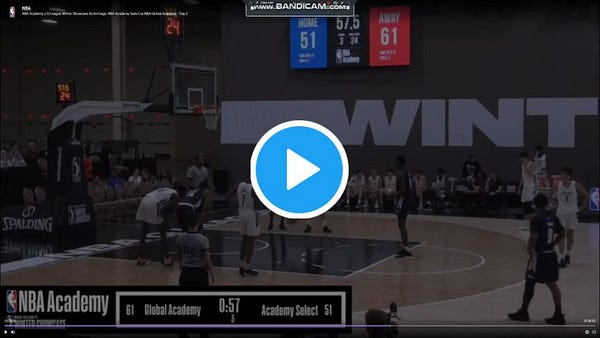
Developing his right hand will go a long way to making his attacks less predictable, but Wigness has elite, NBA level quickness, a shifty handle and a strong (albeit undersized) frame ready to compete with grown men. He will be able to provide a scoring punch off Brisbane’s bench when needed. The question is, with a scoring-oriented roster and multiple options at point guard, exactly how big is the dose required?
New Zealand Breakers
13. Kyrin Galloway
Galloway comes to the NBL after completing four years at USC Greensboro. The 6’8 forward is primarily a pick and pop option, with a quick and fluid release that led to him knocking down 56 threes in 27 games last season. Though his senior year would see him pigeonholed into taking over 80% of his field goal attempts from behind the arc, Galloway is more than just a sharpshooter. Possessing above average length and athleticism, Galloway can finish above the rim offensively and protect the rim on defence.
Currently a development player, it appears Galloway will fight with the fully contracted Daniel Trist for minutes backing up Finn Delany at the four. Personally, I subscribe to Brad Winter’s argument earlier this week that Galloway should win out in that competition for minutes.
14. Taine Murray
With his signing likely slipping under the radar for most NBL fans —particularly for us Australians— Taine Murray might possibly be the most underrated player on this list.
Part of the reason for the little fanfare surrounding Murray’s addition to the Breakers is that, unlike Josh Giddey and Mojave King, Murray did not sign a Next Stars deal, nor is he on a fully contracted deal such as Tamuri Wigness or Wani Swaka Lo Buluk. Instead, Murray is joining as an unpaid development player in preparation for playing college basketball at the University of Virginia.

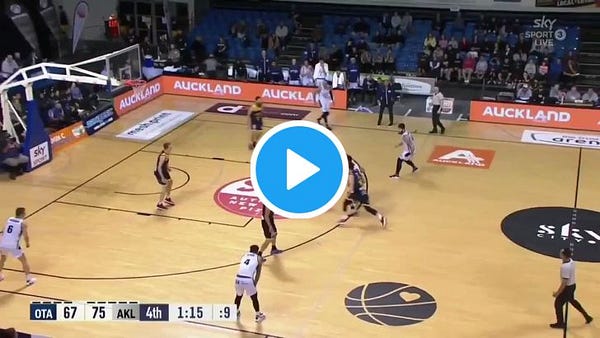
Such a high level commitment comes off the back of rising stock, following play as a junior and most recently in the NZNBL. Playing for the Auckland Huskies last year, Murray would average 17.8 points per game, knocking down over three triples a contest at a clip of 44.9%. Carrying the team’s offence alongside back court partner (and current Phoenix DP) Izayah Mauriohooho-Le'Afa, it would cement Murray’s stock as of the best international shooters in his class. As a result, Murray currently sits at #81 on 247’s Class of 2021 Top 100.
It’s worth noting that Murray is more than just a shooter. Listed at 6’5 with a 6’10 wingspan (though recent reports suggest he has grown further), Murray has prototypical size and above average athleticism to play either spot on the wing. His offence is versatile. He’s able to come off screens and shoot in a variety of ways, and he uses his athleticism and capable ball-handling to get to his spots off the dribble and finish at the rim.
Whether Murray will be able to showcase said skills on a stacked Breakers roster, would be another discussion entirely. With the Breakers expected to start Tai Webster and Lamar Patterson in the back court, Corey Webster will likely be playing a sixth man role, leaving virtually no minutes at the shooting guard position. If we assume Lamar slides up and plays minutes at the three, he and Abercrombie likely have that spot covered. It appears Murray would likely vie with the recently signed Rasmuch Bach for spot minutes on the wing, of which I believe Murray can definitely earn, but a greater role may be available whilst Corey Webster recovers from his run in with an avocado, as well as if further injuries to the wing rotation surface.
Melbourne United
15. Jack White
Jack White is no stranger to playing with talent. Over his four years at Duke, he played with, and in the latter two years captained, such players as Zion Williamson, Jayson Tatum, RJ Barrett, Cam Reddish and many more elite NBA prospects. White will have no trouble finding his niche alongside the most talented roster in NBL21.
Though his offensive production was limited at Duke, in part due to his place in the pecking order but also from skillset limitations, there was a reason the Victorian landed a spot with the Blue Devils. His maturity and leadership qualities, combined with exceptional ability as a defender and rebounder, make him the ultimate ‘glue guy’ player.
Expect White to hustle and take on some important defensive assignments for United at the four spot. Should he ever figure out his jump shot (28.8% from three at Duke), he should eventually blossom into one of the NBL’s best role players.
16. Mason Peatling
Mason Peatling could and will probably log minutes somewhere. The 23 year old just came off a senior year averaging 17.2 points and 9.1 rebounds for Eastern Washington. While his value as a rebounder and interior finisher was clearly evident throughout all four college seasons, perhaps the most promising senior year developments included an increase in block rate (1.5bpg), assists (3.2apg) and three point volume (21/65 3ptm/a - 32.3%).
As he’s primarily a four, Peatling will likely treat this year as one for development. He stands behind both White and Barlow on the depth chart, as well as Lual-Acuil, who Peter Hooley noted recently has been playing minutes alongside Jock Landale in practice.
However, with Barlow’s age catching up to him and his health more questionable, Peatling will likely be called on at times throughout the season to fill out the front court rotation. As the year goes on, and even more so heading into next season —by which time Peatling’s contract will elevate him to a full roster spot— expect him to be a more established part of United’s rotation.
South East Melbourne Phoenix
17. Tristan Forsyth
A South East Melbourne local, it appears 22 year old Tristan Forsyth will be thrown into the fire for his hometown team, as he fills in for an injured Dane Pineau to start the season.
After two seasons dominating at Sequoia followed by a year at Cal Baptist, Forsyth has turned pro. In his two preseason games, he was productive, putting up a combined 15 points and 9 rebounds in 30 minutes of play, though it’s worth noting he was exploited defensively by Harry Froling throughout the Bullets’ matchups.
With a big, physical body and a range of offensive tools, Forsyth looks ready to take advantage of such an immediate opportunity, though it’s hard to see him feature as part of the rotation once Pineau returns to the lineup.
If you enjoyed reading this, do consider becoming a paid subscriber today. It’s only $5 a month, or $50 a year. Your support allows us to continue producing extensive coverage around NBL and Australian basketball. Thank you!


